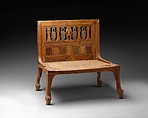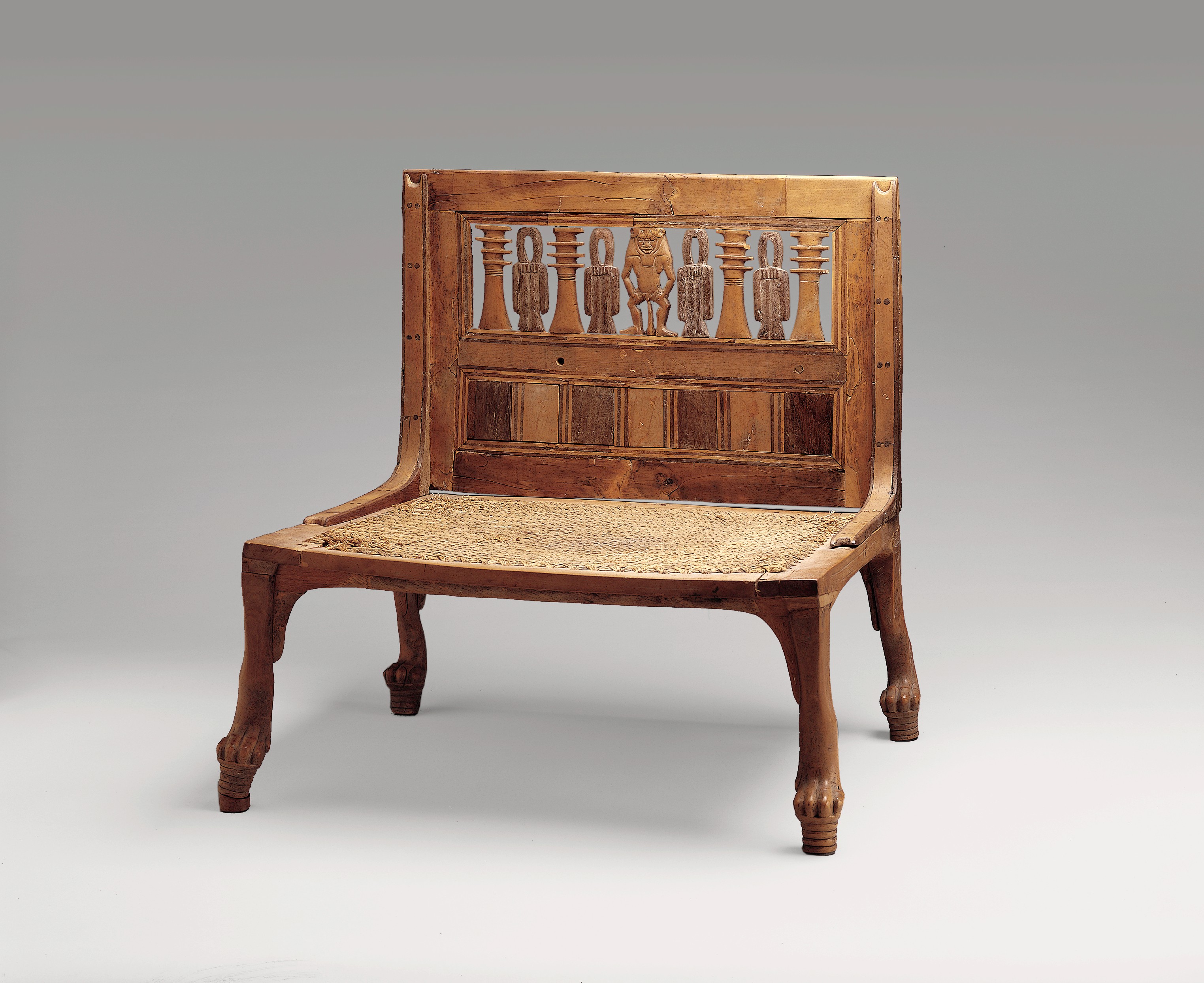Hatnefer's Chair
New Kingdom
Hatnefer (36.3.1) was the mother of Senenmut (36.3.252), one of Hatshepsut's best known officials. Her undisturbed tomb was discovered by the Museum's Egyptian Expedition in 1936 on the hillside below Senenmut's tomb chapel (TT 71). This chair was found in front of the tomb's entrance and was given to the Museum in the division of finds by the Egyptian government.
Hatnefer's chair is a fine example of Egyptian woodworking. The various elements were assembled with mortise-and-tenon joinery, and pegs were used to hold the tenons in place. Pegs also fasten the braces to the back and seat. The joins were reinforced with resinous glue. The decoration on the back of the chair includes a row of protective symbols. In the center is the god Bes, a deity who protected the home. On either side of the god are the tit–amulet which is closely associated with the goddess Isis, and the djed–pillar, which symbolizes stability and endurance. The seat, made of linen cord, is original.
In offering scenes found on the walls of elite tombs, the tomb owner and his wife are often shown seated, side by side, on full-size chairs (68.58). In banquet scenes, however, women are often sitting on low chairs like Hatnefer's and another example in the collection (12.182.28).
Due to rights restrictions, this image cannot be enlarged, viewed at full screen, or downloaded.
This artwork is meant to be viewed from right to left. Scroll left to view more.



